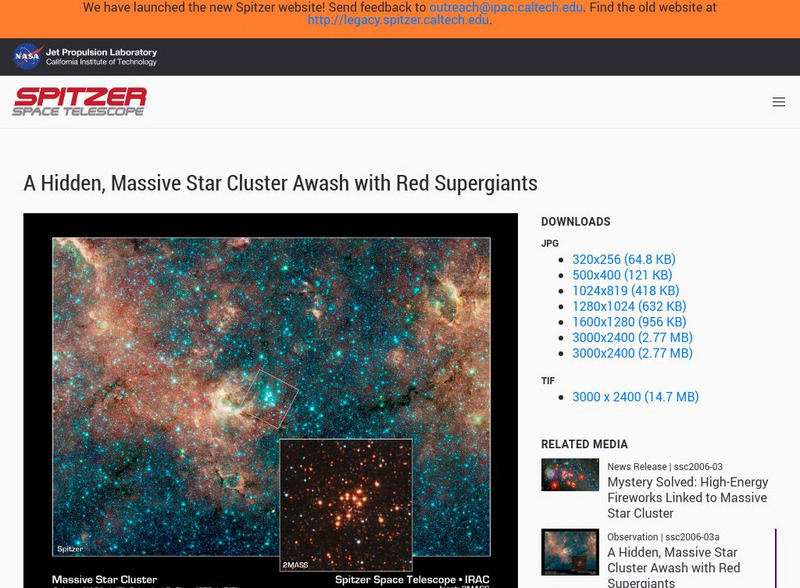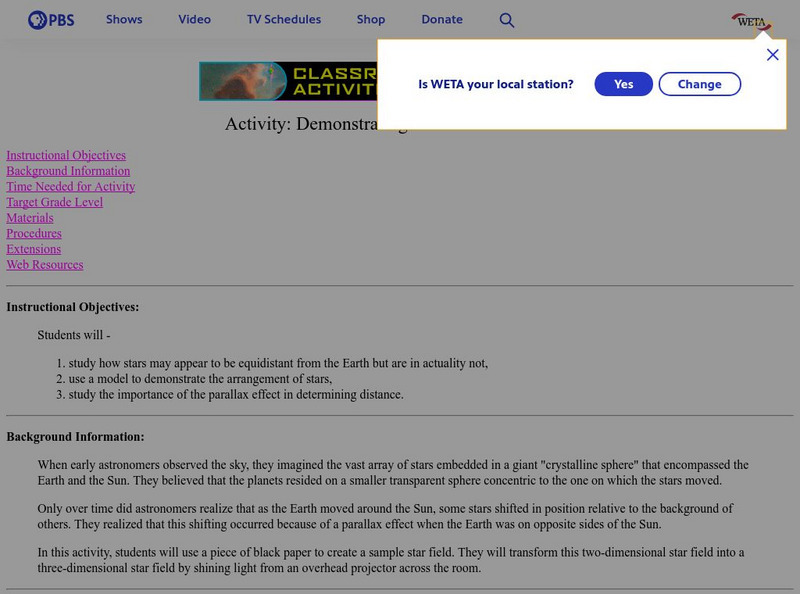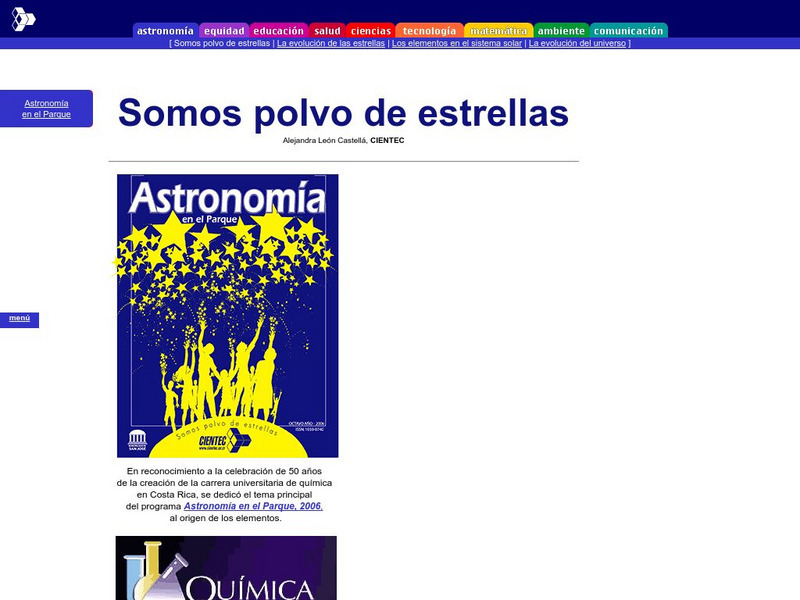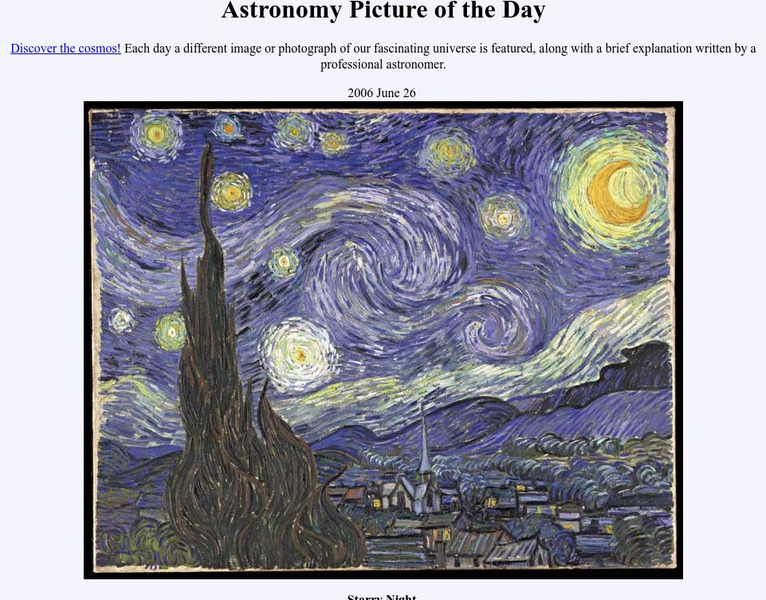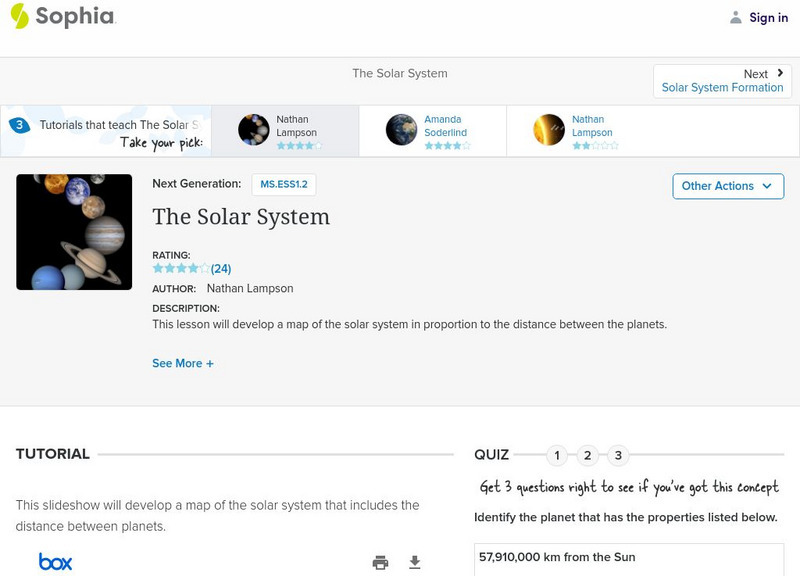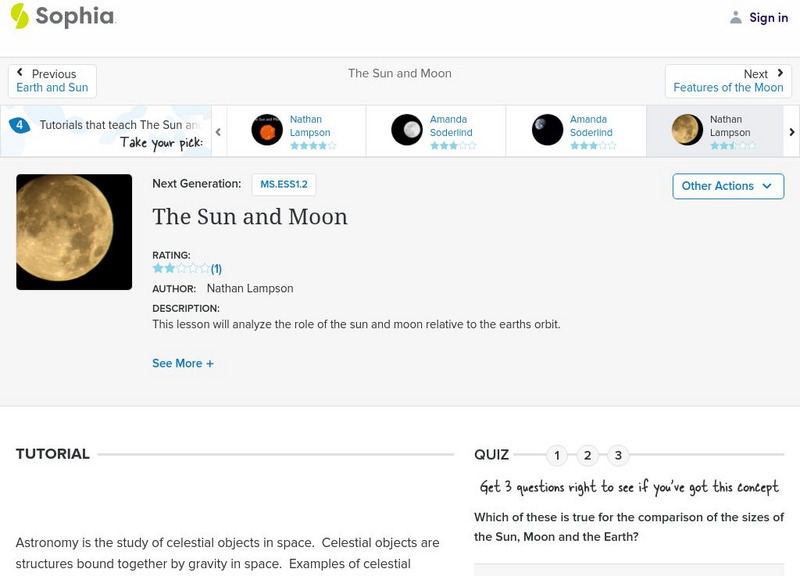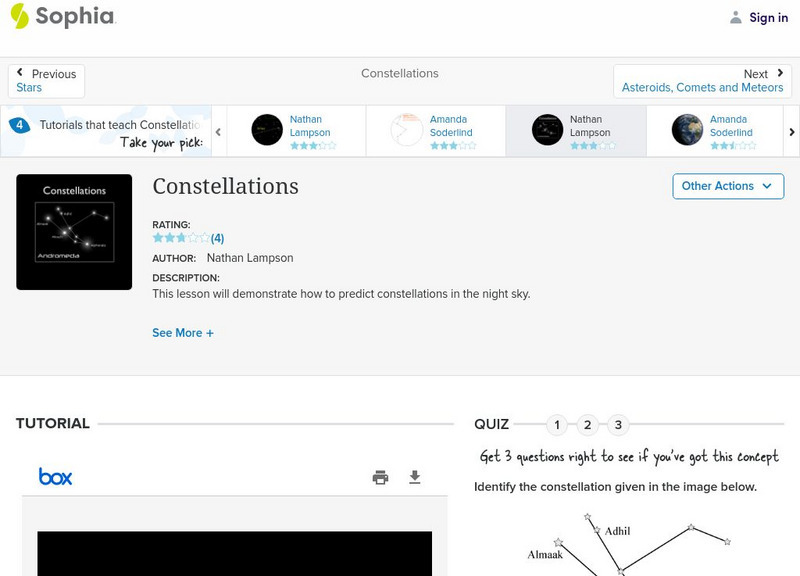NASA
Nasa Space Place: What Is an Exoplanet?
Defines exoplanets and explains how astronomers go about looking for them.
NASA
Nasa Space Place: What Is a Nebula?
Learn about nebula and how stars form inside, and see some exciting images.
NASA
Nasa Space Place: What Is a Galaxy?
This resource explores the different types of galaxies through text and images.
NASA
Nasa Space Place: What Is a Supernova?
Discover interesting facts about supernovas, what causes them, how bright they are, and how do scientists study them.
NASA
Nasa Space Place: What Is a Light Year?
Brief description of light-years with examples and images.
NASA
Nasa Space Place: What Are Constellations?
A brief explanation of constellations. Discusses what determines what stars and constellations you see, the difference between astrology and astronomy, and how NASA uses the constellations.
PBS
Pbs Learning Media: Spin a Spiral Galaxy
This interactive activity from NOVA Online lets you spin a spiral galaxy, including our own Milky Way. It demonstrates that what you can learn from visible light observations of a galaxy is largely determined by the angle from which you...
University of Illinois
University of Illinois: Stars and Constellations: Planetary Nebulae
This resource contains information about planetary nebulae and their characteristics.
California Institute of Technology
Spitzer Science Center: Massive Star Cluster
Under the heading, "A Hidden, Massive Star Cluster Awash with Red Supergiants" this site examines specific details of an infrared image displaying 14 massive stars close to supernova. A detailed text analysis of the picture is also...
California Institute of Technology
Spitzer Science Center: Towering Infernos
The "Towering Infernos" in the image at this site are actually nebulae or star-forming regions. The text under the image details the specifics of the picture.
Ministerio de Educación (Spain)
Ntic: Astronomia Visible
In this site you can learn about stars, planets, satellites and a little history of Astronomy.
PBS
Pbs Teachers: Demonstrating the Distances of Stars
Investigate the use of the parallax effect for determining distance in space, and explore the arrangement and relative distance of stars in the galaxy. Create a sample star field and transform it into a three-dimensional model.
Mark Harden's Artchive
The Artchive: The Starry Night
Find an excerpt from a larger work about Van Gogh that discusses "The Starry Night."
Other
Sky Server: Types of Stars
SkyServer of the Sloan Digital Sky Survey shows you the different types of stars as well as how to classify and identify them.
Other
Sky Server: Scavenger Hunt
In this site, from the SkyServer of the Sloan Digital Sky Survey users hunt for stars, galaxies, quasars, asteroids and meteors. Learn what they look like and how to find them.
Other
Programming Art: 10 Things to Know About Photoshop
This is a list of 10 things everyone needs to know about Photoshop including keyboard shortcuts and how to make specific images such as stars.
Other
Kid Power: Astronomy for Kids
Young children can find facts about the Solar System, the Sun, meteorites, stars, galaxies, planets, our moon, comets, asteroids, and space exploration. Pages offer clear photos and bullet-point information, which is easy to read and...
Fundación Cientec
Cientec: Somos Polvo De Estrellas
Read about the evolution of the stars, the elements of the solar system and the evolution of the Universe.
NASA
Nasa: Astronomy Picture of the Day: "The Starry Night" by Vincent Van Gogh
Discover why the scientists at NASA awarded Van Gogh's famous painting of the night sky, "The Starry Night," a spot on its astronomy-picture-of-the-day site.
Sophia Learning
Sophia: The Solar System: Lesson 1
This lesson will develop a map of the solar system in proportion to the distance between the planets. It is 1 of 3 in the series titled "The Solar System."
Sophia Learning
Sophia: The Sun and Moon: Lesson 3
This lesson will analyze the role of the sun and moon relative to the earth's orbit. It is 3 of 4 in the series titled "The Sun and Moon."
Sophia Learning
Sophia: The Sun and Moon: Lesson 4
This lesson will analyze the role of the sun and moon relative to the earth's orbit. It is 4 of 4 in the series titled "The Sun and Moon."
Physics4kids
Physics 4 Kids: General Physics
This website will teach you about heliosphere, heliopause, stars, the moon and orbits.
Sophia Learning
Sophia: Constellations: Lesson 2
This lesson will demonstrate how to predict constellations in the night sky. It is 2 of 4 in the series titled "Constellations."




